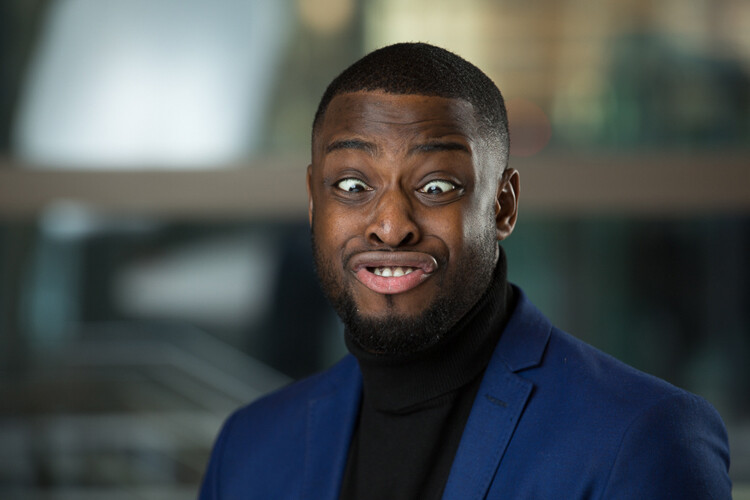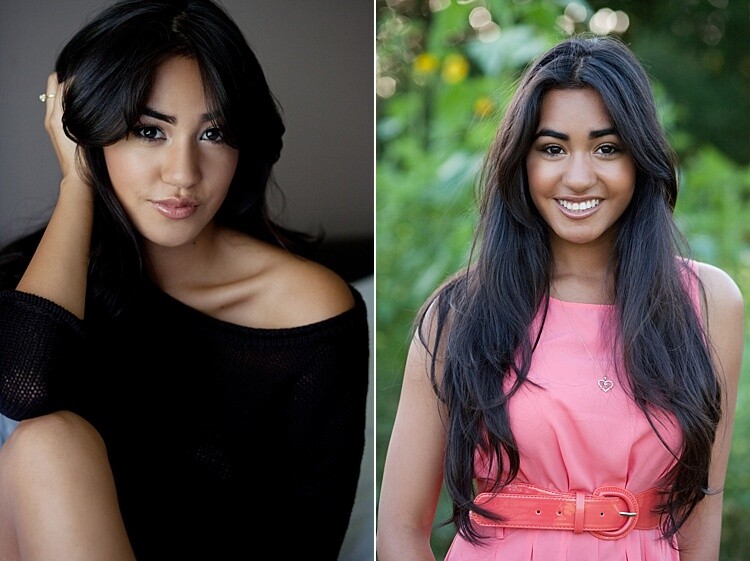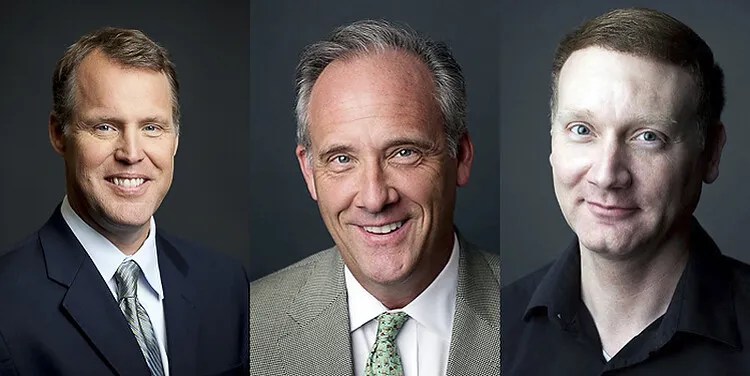The post 10 Tips for Beautiful Black and White Headshots appeared first on Digital Photography School. It was authored by John McIntire.

Black and white has long been a popular way to capture headshots with impact and visual interest. The lack of color helps to emphasize the subject while discarding information that isn’t relevant.
And in this article, I’m going to share 10 black and white headshot tips to help you get the best results.
Let’s get started.
Headshots vs. portraits

If you’re new to portrait photography, it might help to clear up what a headshot actually is before you try to create one.
Portraits: In general terms, a portrait photograph is a representation of a person. Portrait photography is a broad genre that encompasses nearly every subgenre that involves photographing people. It doesn’t matter if we’re talking studio portraits, street candids, or fashion photography. If it has a person in the frame, it’s probably a portrait.
Headshots: Headshots are a subgenre of portrait photography. The difference is that headshots serve a very specific purpose. Whether it’s actors’ headshots or corporate headshots, the purpose is to sell something. That something could be an actor’s ability to fit a role’s physical requirements, or it could be your business professionalism.
Headshots are limited to close-up images of the subject’s head. They can also include head and shoulders as well as half-length shots. Before capturing a headshot, it’s important you understand where and how the photo will be used so you can get the right shot for the right purpose.
Tips for black and white headshots

There are no hard and fast rules for creating headshots. However, following these tips will hopefully help!
And as always with photography, remember: There is no one way to do anything.
In other words, nothing listed here is a rule of any sort. If a tip fails to help you get the results you want or need, then discard or revamp it.
1. Remember that a headshot is different from a portrait

Yes, we’ve already discussed this – but when you’re in the middle of a session, it’s easy to get caught up and start changing your approach. This may not be a problem in a normal portrait session, but with headshots, you need to make sure you’re focused on the specific end result. If you change tack and the results aren’t showing your subject in the desired manner, you’ll have wasted time and effort on images that are unsuitable for the subject’s uses.
One way to help keep you on track is to ask your subject to share the purpose of their headshot. Allow them to be as specific and detailed as possible. Once you have an answer to that question, you should find it much easier to stay on track.
If you are photographing an actor with representation, ask them for their agency’s headshot guidelines (or ask the agency yourself). This will give you a strict set of limitations and help to ensure you get the required result.
2. Getting it right in-camera is just as important as ever

Canon 5D Mark III | Canon EF 50mm f/2.5 Macro | 50mm | 1/125s | f/5.6 | ISO 100
Depending on where your headshots are going to wind up, you might find that you can’t do any edits beyond basic retouching. You should be allowed a black and white conversion and some basic blemish removal, but much more than that might not be acceptable.
Therefore, do whatever you can to get your images right in the camera. Light your images well with good exposure and good contrast. Learn your lighting patterns and use a meter if you have to.
Get this step right, and you might find that you have little more editing to do beyond the actual black and white conversion.
3. Start in color
It might be tempting to set your camera to a black and white mode at the point of shooting. You can do this – but if you shoot JPEGs, I would advise against it.
By choosing this route, you will be discarding a huge amount of color information at the very beginning. For the best conversions, you’ll want to later manipulate your color information to get the very best black and white results.
(However, note that RAW shooters can use a black and white mode while still retaining color information.)
4. Avoid shooting to crop

This might be controversial, but I’ll stand by it. When you are creating black and white headshots, try to get your composition as close as possible to how you want it to end up.
Doing this will ensure that your images are as big as possible and have as much detail as possible when you pass them on to your client. If you shoot before cropping out significant parts of your image, you will lose out on a large chunk of resolution.
5. Control contrast with light, not post-production

This point goes back to getting it right in-camera, but specifically for lighting.
One of the quickest ways to ruin a portrait is to add a lot of unnatural contrast in the post-production phase.
Avoid this by setting up your lights to get the contrast you want from the very start.
You can do this through modifier selection and lighting ratios.
6. Use fill to control your contrast

If you want to decrease contrast, make sure to do it in-camera.
You can do this with fill light. Whether you work with a dedicated second light source or a reflector, introducing fill into your images is a great way to control exactly how your black and white headshots turn out.
7. Think in values rather than color

Canon 5D Mark III | Canon EF 50mm f/2.5 Macro | 50mm | 1/160 sec | f/4 | ISO 100
Because you are starting in color, it can help to think of things in terms of values.
At its most basic, value simply describes where colors fall on a spectrum between pure white and pure black.
Now, once converted to black and white, almost everything in your images will appear as a shade of gray. If you can visualize how the colors you see with your eyes will be represented in a black and white conversion, you will be better able to design your lighting before your subject even arrives.
How do you learn to do this?
Practice. A lot of it.
Get out there and photograph anything and everything you can, then convert to black and white so you can build this skill.
Remember, different conversion techniques affect color and value in different ways, so be sure to practice with as many conversion methods as possible.
8. Minimize details in the frame
Because we are talking about headshots, you’ll need to remember that the entire point of the photograph is the person. Any extra details will only serve to detract from your subject.
So do what you can to minimize the impact of the background, the subject’s clothing, and other elements in the photo.
For backgrounds, you can focus your efforts on finding the cleanest, most non-distracting backdrop. For clothing, ask your subjects to dress without distracting elements that would take the focus off of them. Patterns can be fine, but it might be best if you avoided particularly bold choices like leopard-print and zebra-stripe tops.
9. Focus on form

Canon 5D Mark III | Canon EF 50mm f/2.5 Macro | 50mm | 1/100s | f/9 | ISO 100
This goes back to basic lighting skills.
You need to shape your subject’s face in a flattering way that also helps it stand out in the frame.
You are trying to minimize other details, so it is the subject’s features you must focus on. Make as much use of them as you can.
10. Eyes and expressions are more important than ever

As the goal of a headshot is to make your subject look as good as possible, and as you have already reduced the impact of distracting elements, your subject’s eyes and expression become more important than ever.
Lighting for the eyes will keep them bright and prominent in the frame. Doing this also means you won’t have to spend time processing the eyes, which might work well for your client’s requirements.
Also, to get the best expressions, ensure that your subject is comfortable and that you have a good rapport with them.
Black and white headshots: (not) the end
On their own, headshot photography and black and white photography are broad topics that are truly impossible to distill into a short list of tips. However, I do hope that these ten tips for black and white headshots will help you get started on your journey.
As always, none of these tips are rules, just guidance. If you feel that something I said doesn’t suit you or your photography, that’s perfectly fine.
Now over to you:
Which of these black and white headshot tips did you like the most? Do you have any tips for black and white headshot photography? Share your thoughts (and photos) in the comments below!

If you’re shooting in JPEG, no. But if you’re shooting in RAW, you can decide whether to shoot in black and white or color (you won’t lose any image information in either mode).
Yes. Black and white allows you to strip down the information in the photo to its key elements (in this case, the person whose headshot it is).
Any soft light that flatters your subject is a good choice.
Use whatever method suits you and your workflow best. Photoshop and Lightroom both offer great options for black and white conversions.
The post 10 Tips for Beautiful Black and White Headshots appeared first on Digital Photography School. It was authored by John McIntire.

















































 You can see the side reflector in my studio in this photo (it’s just to Karen’s left).
You can see the side reflector in my studio in this photo (it’s just to Karen’s left).








You must be logged in to post a comment.